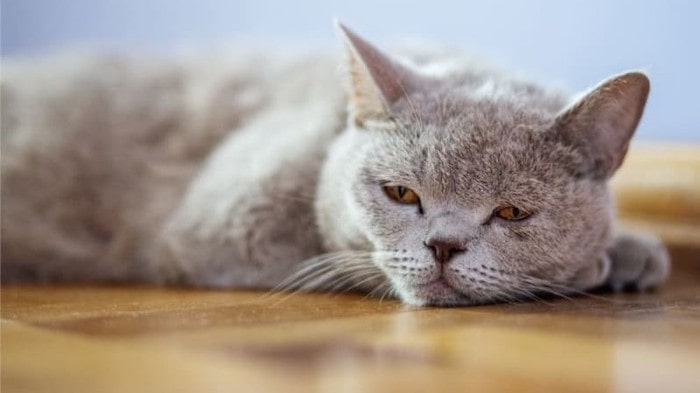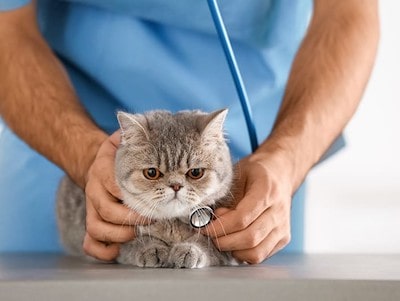Giardia is a common parasite that can infect our feline companions and cause a variety of health problems. It is critical for responsible pet owners to understand this ailment, its causes, symptoms, and treatment choices.
In this article, we will delve into the world of Giardia and provide you with essential knowledge to help protect and care for your beloved cats. Whether you’re looking for prevention strategies, treatment guidance, or simply want to learn more about this parasite, we’ve got you covered.
So, let’s embark on this educational journey together and gain valuable insights into Giardia in cats.
What Is Giardia and How Does It Affect Cats?
Giardia is a single-celled creature that belongs to the protozoa family. It may reside in the intestines of cats and other animals, including dogs and people, and cause giardiasis, a disease. Giardiasis is a gastrointestinal illness that causes diarrhea, vomiting, weight loss, and malabsorption by interfering with food and water absorption in the stomach.
Giardia has two forms: the trophozoites and the cysts. The trophozoites are the active form that multiply and damage the intestinal cells. The cysts are the dormant form that are shed in the feces and can survive in the environment for several months. Cats can get infected by ingesting the cysts from contaminated sources, such as water, soil, food or feces.

The symptoms of giardiasis in cats may vary depending on the severity of the infection, the age and health of the cat, and the presence of other parasites or diseases. Some cats may not show any signs of infection, while others may have mild to severe diarrhea that may be watery, soft, pale, greenish or bloody.
The diarrhea may also contain excess mucus or gas. Other symptoms may include vomiting, decreased appetite, decreased energy and frequent trips to the litter box. Cats with giardiasis may also have an irritated perianal region and groom themselves excessively to keep clean, which can increase the risk of reinfection.
Giardiasis can affect cats of any age, but it is more common and serious in young kittens, senior cats and cats with weakened immune systems. Giardiasis can also affect humans and other animals, so it is important to practice good hygiene and sanitation when dealing with infected cats or their environment.
Diagnosis of Giardia in Cats
There are different methods that veterinarians use to diagnose Giardia infection in cats. The most common ones are:
- Microscopy: This involves examining a sample of your cat’s stool under a microscope for trophozoites (the active form of the parasite) or cysts (the dormant form). Trophozoites are more likely to be found in liquid stools of diarrhea, while cysts are more likely to be seen in fully formed stools. However, both forms are shed intermittently and inconsistently by infected cats, so a negative result does not rule out the infection.

- Immunofluorescence or ELISA: These are serological tests that detect antigens (proteins produced by the parasite) or antibodies (proteins produced by your cat’s immune system against the parasite) in your cat’s stool. These tests are more sensitive and specific than microscopy, but they may also give false positive or negative results due to cross-reactions with other parasites or previous infections.
- PCR: This is a molecular test that identifies the DNA of the parasite in your cat’s stool. This test is more reliable than microscopy or serology for diagnosing Giardia infection in cats, as it can detect the subtype of Giardia and differentiate it from other similar parasites. However, this test is more expensive and not widely available.
Your veterinarian may use one or more of these methods to diagnose Giardia infection in your cat, depending on the availability, cost and reliability of each test. Sometimes, multiple tests may be needed to confirm the diagnosis, especially if the results are inconclusive or contradictory.
How is Giardia treated?
Giardia infection in cats can be treated at home with medications prescribed by your veterinarian. The most common medications used to treat Giardia infection in cats are:
1) Metronidazole: This is an antibiotic that kills the parasite by interfering with its DNA. It is usually given orally for 5 to 10 days, depending on the severity of the infection and your cat’s condition. The dosage may vary from 10 to 25 mg per kg of body weight twice a day.
Metronidazole may cause side effects such as nausea, vomiting, loss of appetite, diarrhea and neurological problems in some cats, so you should monitor your cat’s response to treatment and report any adverse reactions to your veterinarian.

2) Fenbendazole: This is a dewormer that prevents the parasite from reproducing by inhibiting its microtubules. It is usually given orally for 3 to 5 days, depending on the severity of the infection and your cat’s condition.
The dosage may vary from 50 to 100 mg per kg of body weight once a day. Fenbendazole may cause side effects such as vomiting, diarrhea and loss of appetite in some cats, so you should monitor your cat’s response to treatment and report any adverse reactions to your veterinarian.
3) Other drugs: Depending on the severity of the infection and your cat’s condition, your veterinarian may prescribe other drugs to treat Giardia infection in cats, such as albendazole, ronidazole, nitazoxanide or paromomycin.
These drugs have different mechanisms of action and different dosages and durations of treatment. They may also cause different side effects in some cats, so you should follow your veterinarian’s instructions carefully and report any adverse reactions to them.
Some cats may need multiple rounds of treatment to eliminate Giardia infection completely, as the parasite may persist or recur in some cases. You should follow your veterinarian’s recommendations on how often and how long to treat your cat for Giardia infection, and how to monitor their recovery.
Prevention and Management of Giardia in Cats
The best way to prevent Giardia infection in cats is to avoid exposure to the parasite in the environment. You can do this by taking some measures, such as:
- Disinfecting all living areas that your cat has access to with ammonia, bleach or steam cleaning. This includes floors, carpets, furniture, bedding, toys, food and water bowls, litter boxes and scoops. You should do this regularly and especially after treating your cat for Giardia infection.
- Cleaning the litter box regularly and disposing of feces properly. You should scoop the litter box at least once a day and change the litter completely every week. You should also wash your hands after handling feces or litter, and wear gloves if possible.

- Providing fresh and clean water and food for your cat. You should change the water daily and wash the food bowl after each meal. You should also avoid feeding your cat raw or undercooked meat or fish, as they may contain parasites or bacteria that can cause diarrhea or other diseases.
- Avoiding contact with feces from other animals or contaminated soil or water sources. You should keep your cat indoors or supervise them when they go outside. You should also prevent them from hunting or scavenging for food or drinking from puddles or streams.
- Treating other pets in the household as a preventive measure if they are exposed to Giardia. Even if they have no symptoms, they may be infected or carriers of the parasite. Your veterinarian can advise you on how to treat them safely and effectively.
- Testing your cat for Giardia periodically until negative results are obtained. Even if your cat has no symptoms or has completed a course of treatment, they may still have Giardia cysts in their stool that can infect other animals or humans. Your veterinarian can recommend how often and how long to test your cat for Giardia after treatment.
By following these steps, you can prevent and manage Giardia infection in your cat and keep them healthy and happy.
FAQs
Can Giardia be transmitted from cats to humans?
Yes, Giardia can be transmitted from cats to humans. It is considered a zoonotic disease, meaning it can pass between animals and humans. Proper hygiene, such as thorough handwashing, is essential when dealing with an infected cat to prevent human infection.
Can cats develop immunity to Giardia?
While cats can develop some level of immunity to certain infections, it is unclear if they can develop long-term immunity to Giardia. Therefore, prevention and proactive measures to minimize exposure to the parasite are crucial in managing the risk of infection.
Can indoor cats get infected with Giardia?
Yes, even indoor cats can get infected with Giardia. While outdoor cats may have a higher risk due to potential exposure to contaminated environments, indoor cats can still contract the parasite through various means, such as contaminated water or contact with infected animals or humans.
Can Giardia cause long-term health complications in cats?
In some cases, Giardia infections can lead to long-term health complications in cats, especially if left untreated or if the infection becomes chronic. Chronic diarrhea, weight loss, and malnutrition are among the potential complications. Early detection, prompt treatment, and regular veterinary care can help mitigate these risks.
Well, That’s a Wrap
In conclusion, Giardia is a common parasite that can affect cats, causing gastrointestinal symptoms and discomfort. Understanding the causes, symptoms, and treatment options for Giardia is crucial for cat owners to ensure the well-being of their feline companions.
While the infection can be treated with appropriate medications prescribed by a veterinarian, prevention plays a vital role in managing the risk of infection. Maintaining good hygiene practices, providing clean water, and minimizing exposure to potentially contaminated environments are essential steps in safeguarding cats from Giardia.
Regular veterinary check-ups, prompt treatment, and following proper hand hygiene protocols are also important to prevent the spread of the infection to humans. By staying informed, proactive, and attentive to our cats’ health, we can reduce the impact of Giardia and promote a happy, healthy life for our beloved feline friends.
